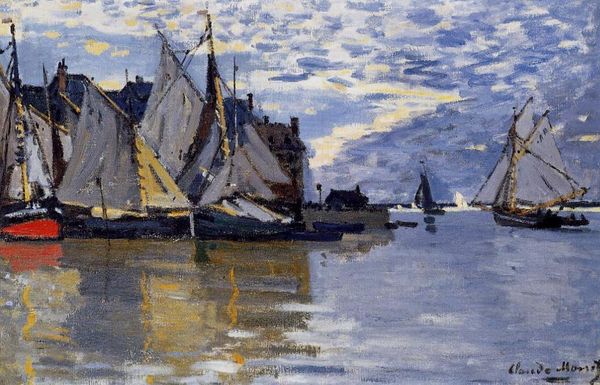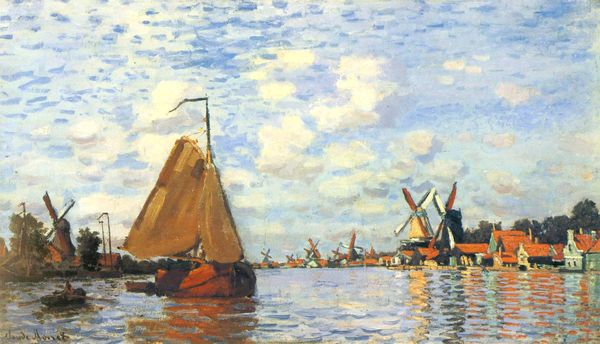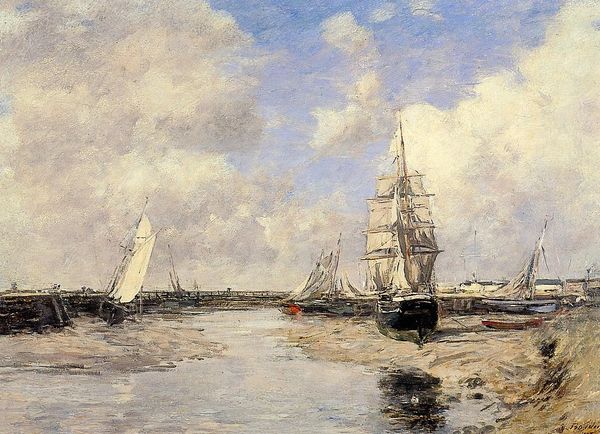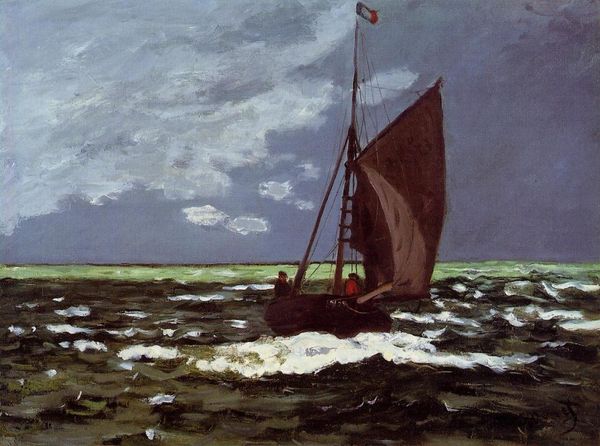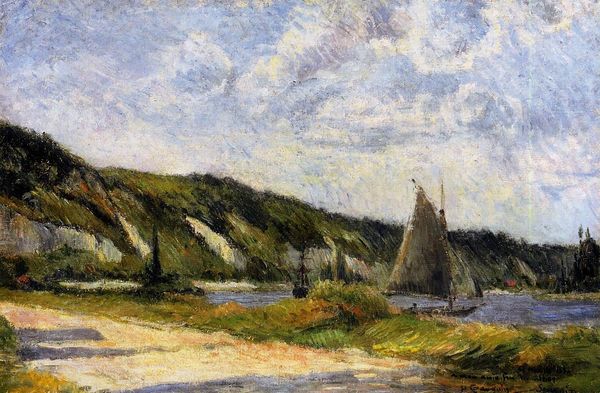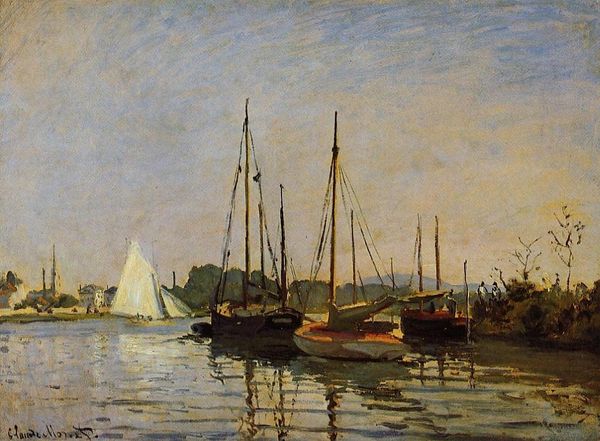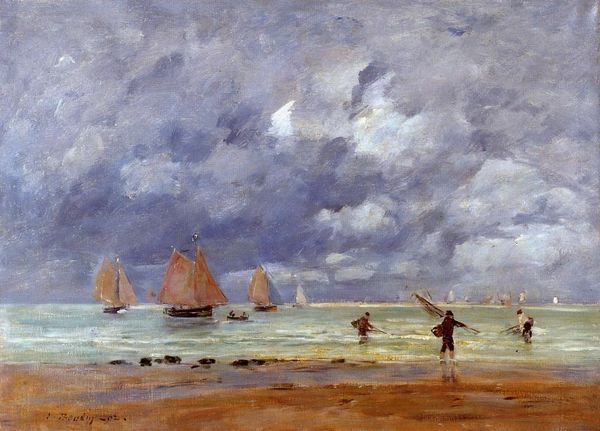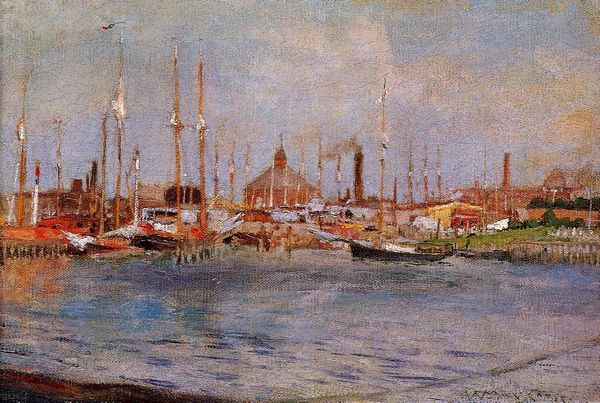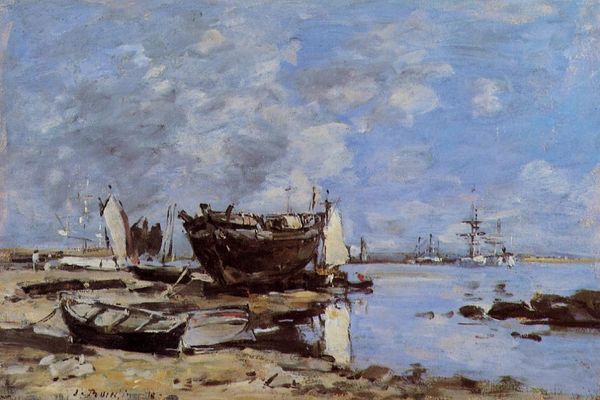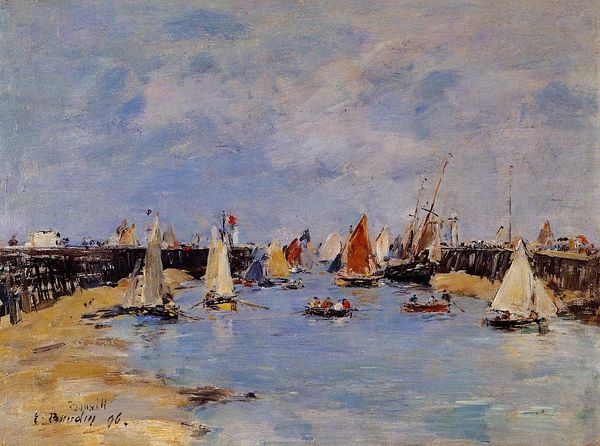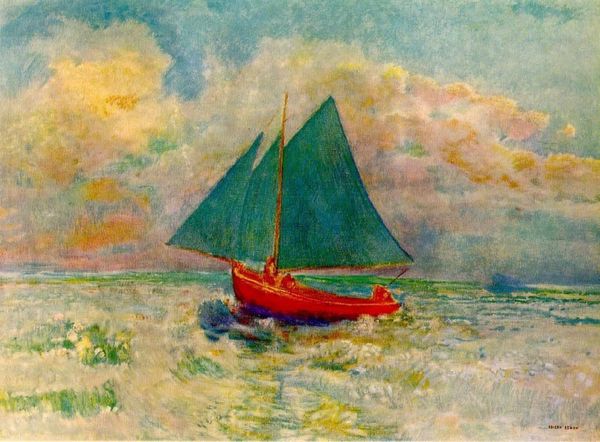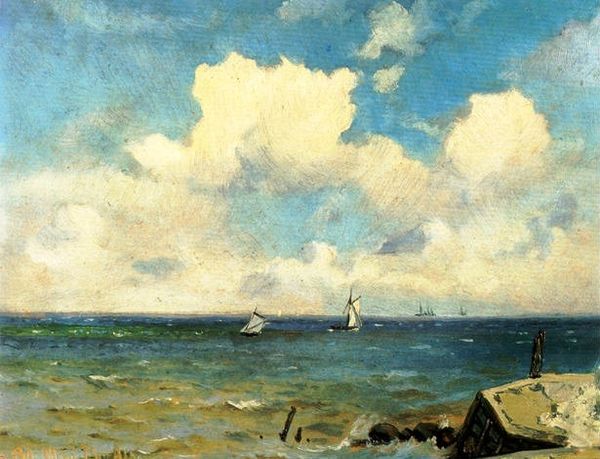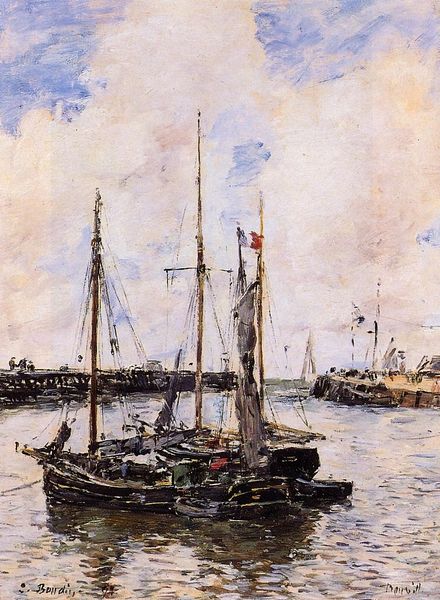
painting, plein-air, oil-paint
#
painting
#
impressionism
#
impressionist painting style
#
plein-air
#
oil-paint
#
landscape
#
impressionist landscape
#
oil painting
Copyright: Public domain
Curator: Painted in 1871, this oil on canvas is Claude Monet's "Seascape." It’s exemplary of his emerging impressionistic style. Editor: The brushwork is just incredible, so free. There's a beautiful sense of light, but also a sort of wistful melancholy, don’t you think? Curator: That could arise from Monet's superb capture of atmospheric perspective. Observe the almost tonal gradations within the cloud formations alone and how it is applied to create recession in depth. The materiality speaks to impermanence and constant change, the cornerstone of impressionism. Editor: Absolutely, but boats also function symbolically, representing journeys, transitions, even vulnerability in the face of vastness. Those tiny figures in the boats! They seem dwarfed, emphasizing a Romantic sense of awe and the sublimity of nature. Curator: The formal construction supports that feeling. The composition, divided horizontally, directs the gaze towards a distant horizon. Each stroke of color carefully orchestrated; notice how complementary hues appear beside one another, causing our visual cortex to read it with intensity and vividness. The boats aren’t merely motifs; they're structural elements activating pictorial space. Editor: Still, they also carry layers of symbolic meaning – adventure, the unknown, a search for something beyond the horizon. They resonate with so many cultural and personal associations tied to the sea! The darker hulls suggest shadowy aspects too: the challenges and hazards of navigating the emotional seas of life. Curator: Interesting... I find those associations less immediately potent than Monet’s treatment of surface, especially the scumbling. Light intermingles with color creating texture, the true subject matter. Editor: But isn't texture always intertwined with meaning? The roughness hints at instability, transience; conditions both real and psychological reflected through an emotional interaction. It prompts the viewer to consider the relationship between man and nature and that search for understanding within that landscape. Curator: Perhaps. Regardless, I cannot help but appreciate this canvas with a deeper understanding after hearing how powerfully its symbols affected you. Editor: And I must confess that paying closer attention to how you’ve explicated the formal components of its technique gave me added appreciation of his achievement.
Comments
No comments
Be the first to comment and join the conversation on the ultimate creative platform.
